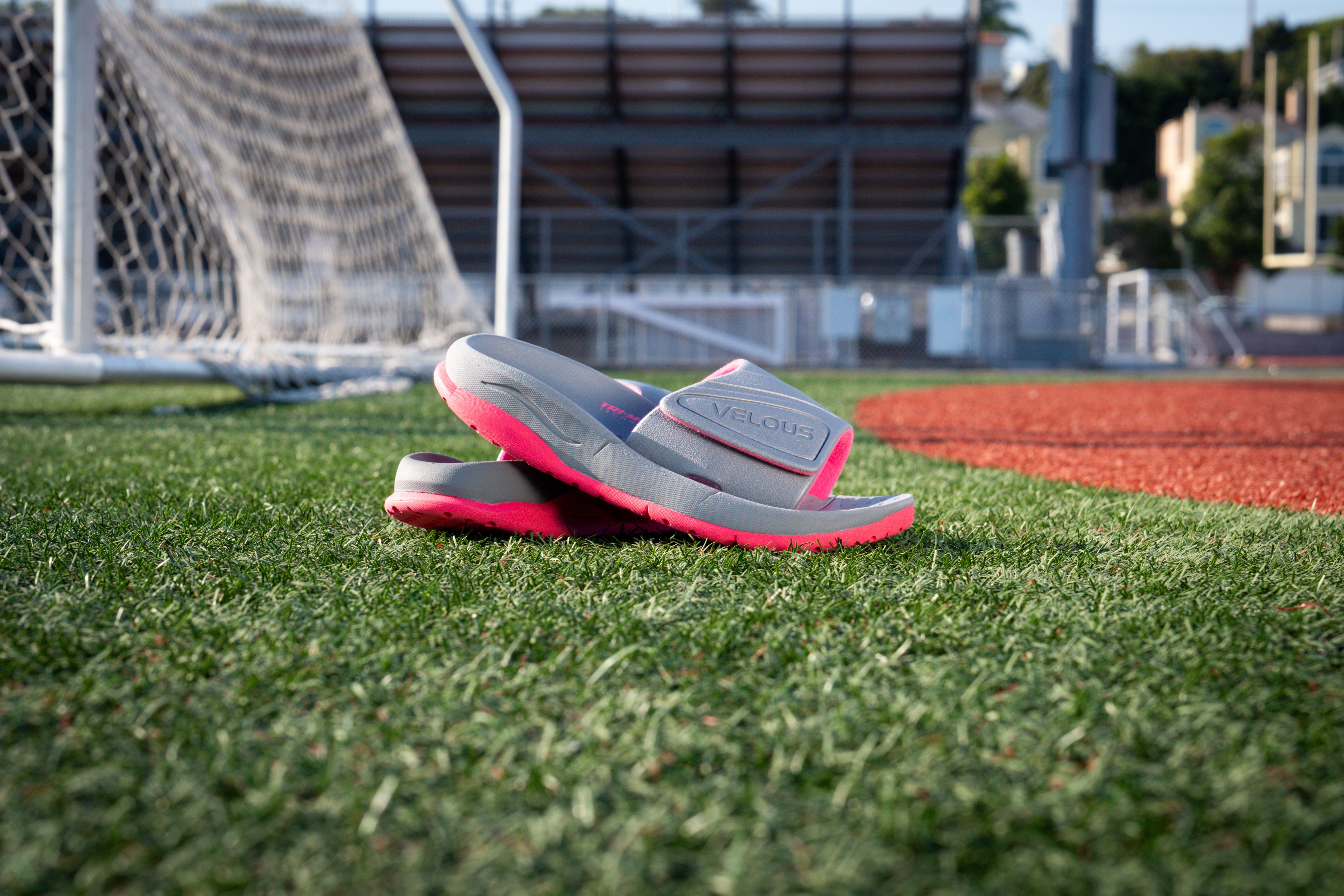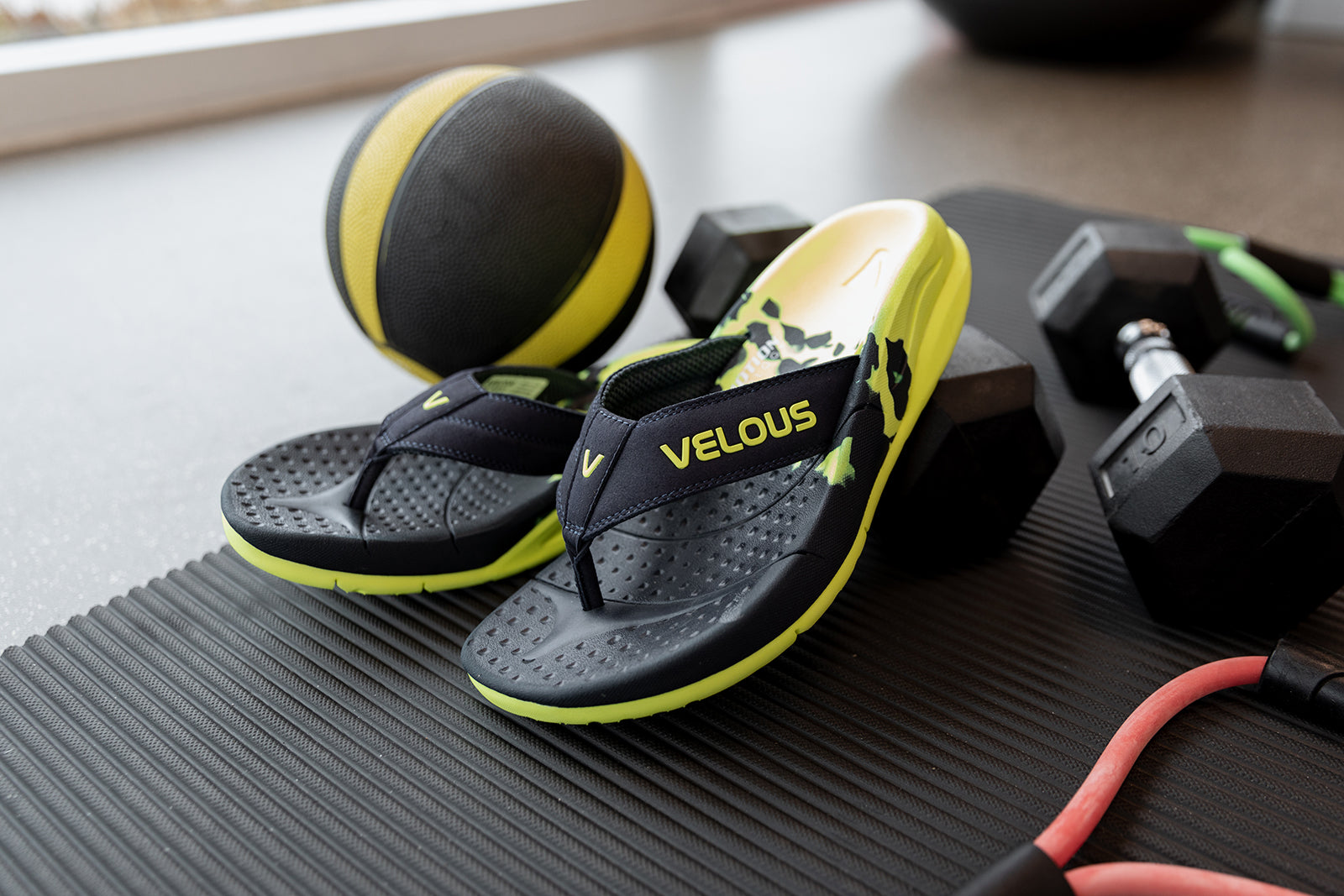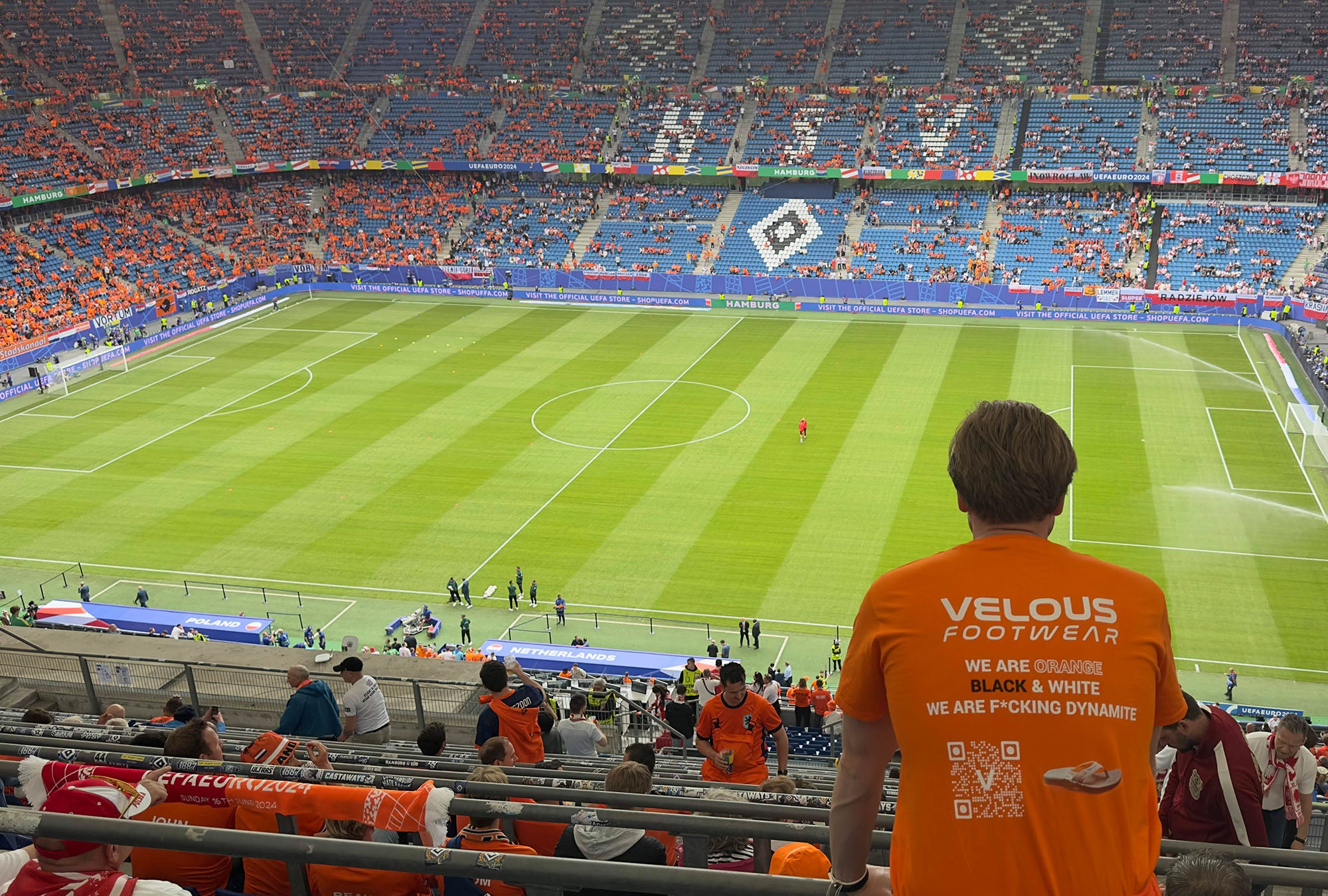Hardlopen is een geweldige workout, maar ook zwaar voor de voeten. Alles, van het loopoppervlak tot de breedte van de hardloopschoen, kan schade veroorzaken. Het dragen van de juiste schoenen, stretchen en voldoende rust nemen, kan de negatieve effecten van hardlopen minimaliseren. Herstelschoenen kunnen ook helpen. Deze schoenen, die zijn ontworpen om te dragen na een training of run, verkorten de hersteltijd en helpen hardlopers zich comfortabeler te voelen na lange, zware runs.
Herstelschoenen zijn relatief nieuw in de hardloopschoenenindustrie, maar worden snel een vaste waarde onder veel hardlopers. Duurlopers die elke maand tientallen kilometers lopen, kunnen voorkomen dat hun voeten te veel schade oplopen, terwijl recreatieve hardlopers herstelschoenen kunnen gebruiken om hun hardloopfrequentie te verhogen en dichter bij hun doelen te komen. Ongeacht het type hardloper zijn herstelschoenen echter voordelig, comfortabel en geweldig schoeisel voor thuis loungen of klusjes.
WAT IS HERSTELSCHOEISEL?
Herstelschoenen zijn een soort schoeisel dat is ontworpen om uw voeten te helpen herstellen na het sporten. Hun uiterlijk kan per merk verschillen, maar er zijn een paar kenmerkende eigenschappen die alle herstelschoenen gemeen hebben. Herstelschoenen zijn in de eerste plaats gemaakt van zachte, dempende materialen en moeten een ondersteunend voetbed hebben. Herstelschoenen kunnen helpen pijn en ontstekingen te verminderen, de bloedsomloop te verbeteren en sneller herstel te bevorderen. Hoewel onderzoeken nog niet doorslaggevend zijn, is er bewijs dat suggereert dat er een verband is tussen herstelschoenen en de snelheid van herstel. Niettemin is er veel anekdotisch bewijs van atleten die zweren bij hun herstelschoenen.
VOORDELEN VAN HET DRAGEN VAN HERSTELSCHOENEN
Herstelschoenen geven prioriteit aan comfort boven alles. Hun zachte, gedempte zolen, vaak gemaakt van gespecialiseerde materialen zoals EVA-schuim, absorberen schokken en impact bij elke stap. Deze zachte demping vermindert pijn en ontstekingen in uw voeten, enkels en zelfs benen, waardoor u zich verfrist en verjongd voelt, zelfs na de meest veeleisende activiteiten.
Het ontwerp van herstelschoenen gaat verder dan alleen demping. Hun unieke constructie bevordert de natuurlijke beweging van de voet en verbetert de bloedsomloop. Deze verbeterde bloedstroom helpt melkzuur en andere vermoeidheid veroorzakende toxines weg te spoelen, wat het spierherstel aanzienlijk versnelt en post-workoutpijn minimaliseert.
De voordelen van herstelschoenen reiken verder dan de directe nasleep van de training. Hun ondersteunende ontwerp, met ondersteuning van de voetboog en een stabiel platform, helpt de druk op uw voeten en enkels te verminderen. Deze proactieve aanpak kan helpen veelvoorkomende overbelastingsblessures zoals scheenbeenvliesontsteking en plantaire fasciitis te voorkomen, waardoor u langer actief en pijnvrij blijft.
Hoewel herstelschoenen uitblinken in het helpen van atleten, reiken hun voordelen verder dan de sportschoolmuren. Ze bieden comfort en ondersteuning aan iedereen die last heeft van vermoeide, pijnlijke voeten, of het nu komt door lange uren staan op het werk, het uitlaten van de hond of gewoon door de dagelijkse hectiek.
SOORTEN HERSTELSCHOENEN
De afgelopen jaren zijn er drie prominente ontwerpen voor herstelschoenen ontstaan. De meeste herstelschoenen vallen onder de volgende drie categorieën: slides, flips en schoenen.
Herstelflips lijken op uw gemiddelde flip, maar ze hebben vaak een meer uitgesproken ondersteuning van de voetboog en zijn gemaakt van lichtgewicht materialen. Hoewel ze een goede optie zijn om te dragen bij warm weer of na een training, zijn recovery flips het minst gebruikelijk.
Atleten gebruiken al lang slides na een training omdat ze door hun open teen gemakkelijk te dragen zijn. Recover slides zijn gemakkelijk aan en uit te trekken en zijn een goede optie om thuis, na een training of met sokken te dragen.
Net als gewone schoenen hebben recovery schoenen een gesloten neus. Recovery schoenen zijn echter meestal gemaakt van lichtgewicht materialen zoals schuim en textiel, met een ontwerp dat helpt bij het ademend vermogen. Voor degenen die schoenen verkiezen boven flips en slides, kan een recovery schoen de juiste pasvorm zijn.
HOE KIES JE RECOVERY SCHOENEN: KENMERKEN OM OP TE LETTEN
Recovery schoenen hebben misschien vergelijkbare silhouetten en kenmerken, maar er zijn subtiele verschillen die een verschil kunnen maken in je hersteltijd.
- Het type oefening dat u doet: Als u oefeningen doet met een hoge impact, zoals hardlopen of springen, hebt u een herstelschoen nodig die meer ondersteuning en demping biedt dan wanneer u oefeningen doet met een lage impact, zoals wandelen of zwemmen.
- Het klimaat: Herstelschoenen zijn meestal gemaakt van lichtgewicht en ademende materialen, zoals mesh of EVA-schuim, om uw voeten koel en comfortabel te houden. Dit is vooral belangrijk na het sporten, wanneer uw voeten de neiging hebben om meer te zweten.
- Wasbare materialen: Veel herstelschoenen zijn gemaakt van wasbare materialen, zodat u ze gemakkelijk kunt schoonmaken en ze fris kunt houden. Regelmatig wassen is de sleutel tot het voorkomen van bacteriegroei. Dit is vooral belangrijk voor degenen die herstelschoenen dragen direct na een training.
- Dikke en gedempte tussenzool: Herstelschoenen hebben vaak een dikke, gedempte tussenzool om voldoende schokabsorptie te bieden en uw gewrichten te beschermen. Dit helpt de impact van elke stap te verminderen en bevordert sneller herstel. De dikte van de demping is echter een kwestie van voorkeur. Sommigen vinden dat te veel demping de schoen te instabiel maakt, waardoor de soorten activiteiten waaraan men kan deelnemen, worden beperkt.
- Rockervormige zool: Veel herstelschoenen hebben een rockervormige zool, die bij de teen en hiel omhoog is gebogen. Dit ontwerp bevordert een natuurlijke rollende beweging door de loopcyclus, waardoor de belasting van uw voeten en enkels wordt verminderd. Het is belangrijk om rond te lopen om een gevoel voor de rocker te krijgen. Te veel rocker kan voor sommigen oncomfortabel of instabiel aanvoelen.
- Brede teenbox: Herstelschoenen hebben vaak een bredere teenbox dan traditionele sportschoenen. Hierdoor kunnen uw tenen zich op natuurlijke wijze spreiden, wat het comfort verbetert en het risico op blaren vermindert. Het is echter vermeldenswaard dat een te brede teenbox een negatieve invloed kan hebben op het herstel, omdat de voet te veel zal verschuiven om te profiteren van de ondersteuning van de schoen.
- Gemakkelijk aan- en uittrekfuncties: Veel herstelschoenen zijn ontworpen om gemakkelijk aan en uit te trekken, zoals instapmodellen of schoenen met klittenbandsluitingen. Dit is handig voor vermoeide voeten na het sporten, waardoor ze snel en gemakkelijk te gebruiken zijn.
- Ondersteunende ontwerpelementen: Hoewel niet altijd aanwezig, bevatten sommige herstelschoenen extra functies voor ondersteuning, zoals een mediale post voor boogondersteuning of een iets hogere hiel-tot-teen drop voor meer stabiliteit.
- Stijlvolle opties: Herstelschoenen zijn niet langer beperkt tot alleen functionele ontwerpen. Veel merken bieden stijlvolle opties in verschillende kleuren en patronen, zodat u een paar kunt vinden dat bij uw persoonlijke stijl past.
DE EERSTE STAP NAAR HERSTEL BEGINT MET VELOUS SCHOENEN
Herstelschoenen bieden essentieel comfort en ondersteuning voor sneller herstel na fysieke activiteiten. Deze schoenen zijn verkrijgbaar in stijlen als slides, flips en schoenen met gesloten neus en hebben zachte zolen, brede teenboxen en rockervormige zolen om pijn te verminderen, de bloedsomloop te verbeteren en ontstekingen te helpen verminderen. Ze voldoen aan de behoeften van zowel serieuze atleten als casual gebruikers en zijn niet alleen gunstig voor na het sporten, maar ook voor dagelijks gebruik. Met hun toenemende populariteit worden herstelschoenen een belangrijk onderdeel van zowel atletische als dagelijkse voetverzorgingsroutines.
Met de gepatenteerde Tri-MotionTM-technologie en de gepatenteerde Foamotion-formule van Velous Footwear krijgt u het beste van twee werelden: een snellere hersteltijd en comfort. We hebben zoveel vertrouwen in onze herstelslides, flips en schoenen dat we een garantie van 30 dagen bieden op al onze producten. Als u het niet leuk vindt, kunt u het binnen 30 dagen terugsturen voor een restitutie van 100%. Koop vandaag nog onze lijn herstelschoenen om uw herstel morgen te verbeteren.






